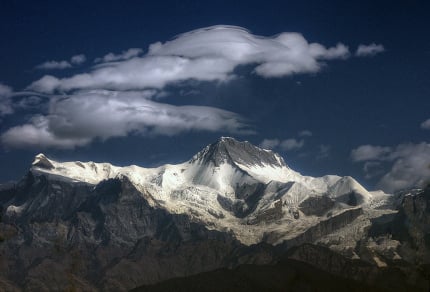This year Nepal faced some of the most severe natural disasters in the country’s history, in which hundreds of people lost their lives. The tourist industry was badly hit, facing an unprecedented loss of trekkers in the western part of the country as well as the death of Sherpas while climbing Mount Everest in the eastern region. In addition, a huge landslide on the Nepal-Tibet border killed more than 150 villagers and blocked a major river flowing from Tibet, leaving thousands of people stranded.
Sixteen Sherpa guides were in killed in April when an avalanche struck the Khumbhu Icefall on Mount Everest. What was one of the worst ever mountain climbing accidents in Nepal had an adverse impact on the tourism sector as it occurred during the peak climbing season. As a result, Sherpas refused to join climbing expeditions demanding better security and compensation for those killed. All mountaineering expeditions were cancelled resulting in huge financial losses for tour companies.
In early August, a huge landslide in the Sindhupachowk district near the Tibet border blocked the Sunkoshi River for over two weeks partially, causing havoc across the region. The landslide swept away the whole village, killing155 people and devastating hydropower projects and roads worth billions of rupees.
In mid October, cyclone Hudhud which originated in India, reached Nepal, causing heavy rainfall and blizzards in the western part of the country and killing 43 Nepali and foreign tourists. The cyclone hit the famous Annapurna trekking route, resulting in one of the highest number of casualties recorded on Nepal’s trekking trails. The disaster dealt a blow to the tourist industry, which contributes nearly 8% of the country’s GDP.
Besides these incidents, numerous floods and landslides killed more than 100 people across the country over the year.
Hydropower development
Nepal signed deals with India to develop 1,800 megawatts of hydropower in second half of the year. In a country that has generated 700 megawatts of electricity generated in over a century century, this is one of the biggest deals in the country’s history. The most controversial projects –the Arun III in the eastern part of the country and the Upper Karnali in west – were signed during the Indian Prime Minister Narendra Modi’s visits to Nepal in August and November and will be completed within the next five years.
For many people, these are milestone deals for a country that has been reeling under a severe energy crisis for decades, but others fear that these mega projects will compromise the environment. The World Bank withdrew financial support from the controversial Arun III project, amid pressure from civil society organisations.

